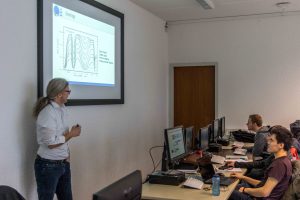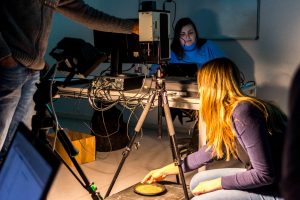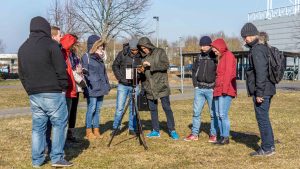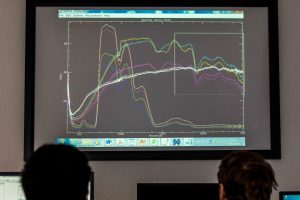
One reason that makes this master’s program so attractive is its highly diverse coursework. This is being reflected by the currently available block courses. The “Hyperspectral Remote Sensing” course held by Dr.rer.nat. Martin Bachmann is part of that. In this course students receive an introduction to the world of spectroscopy and hyperspectral remote sensing, its limitations and potential.
The main focus of the seminar was working with a field spectrometer. Students got hands on experience calibrating the spectrometer using a spectralon, as well as measuring the spectral signatures of different subjects under simulated laboratory conditions. Different LAI measurements, as well as measurements of various minerals, soil types and the effect of wetness have been examined. Additionally, further studies on the impact of soil aggregate size and shadow effects were carried out.

Since the purpose of a field spectrometer is to be used in the field, the students took the opportunity to take some measurements across the campus, under the guidance and provided with the expertise of Dr.rer.nat. Martin Bachmann. Taking measurements outside introduces more factors that need to be taken in account, for example cloud coverage and the spectral behavior of solar radiance in contrast to laboratory conditions.

The software ENVI Classic has been used to visualize the measurements, calculating various statistics and for identifying features regarded to distinct spectral behaviors of different materials. Furthermore, own spectral libraries consisting of the taken measurements have been created and compared to existing libraries.

This course provided students with the knowledge how to correctly conduct field spectroscopy measurements, the impact of shadow effects, surface roughness and different viewing angles, as well as the expertise to visualize and interpret certain spectral characteristics.
Reporting from the Student’s Board
Marius Philipp
